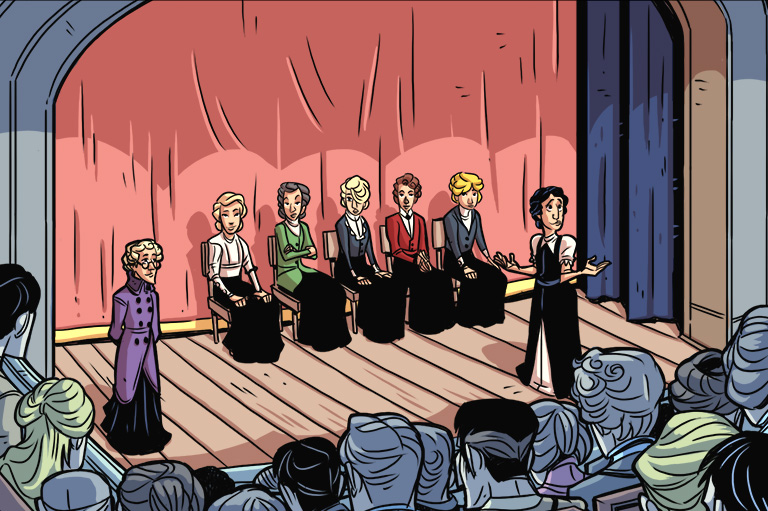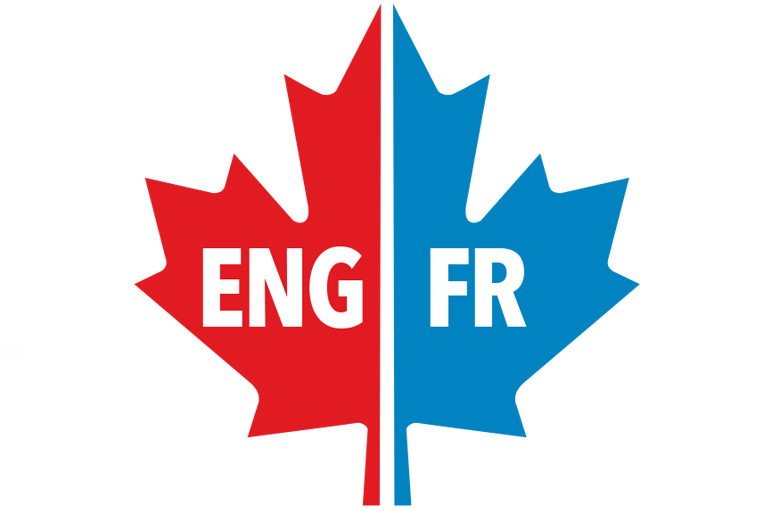Voting Rights in the Classroom
This educational package is inspired by Canada in Focus Episode 2: Making it Count.
Ideas on Incorporating Voting Rights History into the Classroom
Written by Shannon Leggett, Brockton School, North Vancouver, British Columbia
How societies organize themselves to survive and thrive is at the core of any Social Studies curriculum and is the basis for understanding how the past impacts our lives today. Who makes the rules and enforces them has been a major cause of human conflict, contributing to the rise and fall of civilizations. Learning from the lessons of the past to create a more peaceful, equitable, and sustainable future is an essential educational goal. Consequently, understanding the evolution of voting rights (who makes the rules and enforces them) is at the core of attaining this goal.
One way that teachers can start their curriculum is by having students create their own civilizations given random coordinates within specific regional or international parameters. There are many ways that this activity can be adapted to the curricula at multiple grade levels depending on the specific historical time frame. The essence of the creation of each civilization is sociological: how do humans get and distribute scarce resources to fulfill their basic needs and wants to survive and thrive equitably and sustainably?
To do this, rules are established. One of the essential components in creation is having students brainstorm the most important rules for their community, as well as determining who would be the leaders charged with enforcing them and why. Those rules are at the core of understanding the concept of voting rights as students must grapple with determining what their ideal society would look like and how challenging it could be to establish it. Students should determine who has the right to be the leader(s), and who is enfranchised or who is not. Their peers should challenge these decisions and interrogate their reasoning when they present to the class.
Nearly every year there is an election: municipal, provincial, or federal, as well as Indigenous band ones. The Canadian organization CIVIX offers teachers the opportunity to help them run Student Votes in schools throughout the country. A particular class can be in put in charge of running the school’s vote, taking on any specific roles that would normally be filled. Throughout the unit, students create a reflective Election Scrapbook that includes activities and resources to learn more about the specifics of Canadian governance. Students can write questions to the candidates, and even invite them to an All-Candidates Meeting at their school. Students are encouraged to take surveys by Vote Compass to determine which party/parties best aligns with their values.
After the elections, students can compare/contrast the results of their school’s vote with other schools from across Canada looking for the similarities and differences. One of the most exciting parts of that comparison is trying to get the highest voter turnout, and then to analyze why schools had higher rates than others and how a low voter turnout rate could be fixed. As a part of Reconciliation, students can compare/contrast the local Indigenous governance systems with what they have experienced, inviting band legislators to share their experiences. The key goal of the CIVIX Student Vote is to get students to establish the “habit” of voting at an early age by them recognizing voting’s fundamental importance to the functioning of a democratic society. It is exciting to see 18-year-old Grade 12s or siblings of alumni tell stories how enthusiastic they were the first time they got to vote!
The evolution of women and minority rights is an essential component of a Social Studies course. The act of giving the “right to vote” is often used as a way to demarcate “progress” in the attempts to create a more equitable society. A unit on the First World War affords the opportunity to see a significant change in this regard, as well as to analyze the origin of each group’s voting rights, and how restricted this right continued to be for some groups for many years post-war.
Unpacking the importance of voting rights in an educational setting is imperative for the preservation and maturation of a civilization. For citizens to not take their rights for granted, and continue to advocate for a more equitable world, students need to examine and exercise the right to vote.
More Advice From Teachers
How would you teach the history of voting rights?
In the context of the times in which we live, voting is of paramount importance. Students need to understand that these are rights that should not be taken for granted and were fought for with great effort by both women and minorities. The struggle to obtain the vote and maintain voter engagement were and are very real challenges. Starting from this premise makes it very real for students. Bring elections into the classroom, especially as current events can lead to valuable discussions about political engagement. Show a news segment about a current election and explore a poll about projections and voter engagement. Historically, look at the suffrage movement by asking students to research “pink tea parties.” They will discover how subversive and clandestine women in the early 1900s were to protect the cause of getting the vote. Then, show a video clip about the Famous Five, Emily Murphy, or Nellie McClung. This will open the discussion around getting the vote, allowing for a more in-depth look at the suffrage movement. Research and explore a timeline of voter rights using historical significance. Other types of engaging activities can grow out of this. It could even lead to hosting a classroom Pink Tea Party around the importance of voting with informal debates and real tea and decorations! Another option is to have an election simulation where students create their own political parties and conduct a vote using authentic voting screens, ballots, voter lists, and ballot boxes!
– Emilia Adorante, Thornhill, Ontario
Voting rights in Canada is taught when discussing the fight for women’s rights in Canada in the 1910s and leading up to the Person’s Case in 1929. However, students simultaneously unpack how different groups of Canadians were denied suffrage and access to voting rights due to their ethnicity, gender, and according to the Indian Act. Furthermore, students also look at the ways in which voting rights have shifted to accommodate Canadians who identify as transgender. Students learn about the fight for rights for Black Canadians, Chinese Canadians, Indigenous (including Inuit) peoples, and women, and how in some instances, depending on the region, women in Quebec gained voting rights in 1960. Using a series of short articles, case studies, and videos created by Elections Canada and other materials, students come to understand the barriers which limited access to voting, and how Canadians fought for these rights and to make their voices heard and votes count.
– Katy Whitfield, Toronto, Ontario
In my grade 10 class, we begin with a study of democracy and government so that students begin with an understanding of what voting accomplishes. Then, as we go through our history and learn about the decisions that Canada was making, we contrast who was allowed to participate in those decisions with who was the most affected by them. We study how different marginalized groups gained the right to vote, and we also examine the complex impact of enfranchisement and assimilation for Indigenous peoples. As the students study The Charter of Rights and Freedoms, they learn about the protection of our voting rights and how denying different groups the right to vote was used to control power and privilege.
– Katie Tressel, Langley, British Columbia
How do you make voting rights history engaging?
Using a case study approach and allowing students to choose their case helps to engage them in this content. Students use the framework of a SWOT analysis (Successes, Weaknesses, Opportunities and Threats) to identify the ways in which some Canadians easily gained access, whereas others faced significant barriers, discrimination, and limited access to suffrage due to laws, social expectations, and access to polling stations. Connecting students to the learning they are doing in their civics courses relating to voting rights and the historical timeline will help them to make more meaningful connections.
– Katy Whitfield, Toronto, Ontario
More Resources from Canada’s History
Lesson Plans and Activities on Voting Rights
Learn More with These Resources
- Classroom Resources, Student Vote
- Heritage Minutes: Nellie McClung, Historica Canada
- 90th Anniversary of the ‘Persons’ Case: Host Your Own “Pink Tea”, Famous 5 Foundation
- Virtual Pink Tea Conversations, Famous 5 Foundation
- Order Free classroom materials and ballot boxes from Elections Canada
- Voting Rights in Canada, The Canadian Encyclopedia
- Right to Vote in Canada, The Canadian Encyclopedia
- CIVIX’s Student Vote program
- Voting Rights through Time, Elections Canada
- History of Voting in Canada, Canadian Museum of History
- Voting Rights Through Time, Elections and Democracy
- The Chaotic Story of the Right to Vote in Canada written by Matthew McRae, Canadian Museum for Human Rights
- Chinese Get the Vote, British Columbia: An Untold History
Themes associated with this article
Advertisement

Canada in Focus is made possible through the generous support of The Northpine Foundation.














